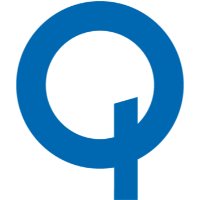Qualcomm demonstrates a robust business model with strong competitive advantages in the chipset and licensing markets. Its diversification efforts and focus on AI innovation position it well for future growth, despite market challenges. The company’s strong financial performance and strategic partnerships indicate a bright outlook.
Analysis Date: February 5, 2025
Last Updated: March 12, 2025
Trailing Twelve Months (TTM) values provide a view of the company's performance over the last year.
Graham Value Metrics
Benjamin Graham's value investing approach focuses on finding stocks with a significant margin of safety between their intrinsic value and market price.
Intrinsic Value
Estimated fair value based on Graham's formula
$366.10
Current Market Price: $127.00
IV/P Ratio: 2.88x (>1.0 indicates undervalued)
Margin of Safety
Gap between intrinsic value and market price
65.0%
Graham recommended a minimum of 20-30% margin of safety
Higher values indicate a greater potential discount to fair value
ROE: 41.27359643377358
ROA: 5.721997300944669
Gross Profit Margin: 55.994593930458294
Net Profit Margin: 25.936847278535446
Trailing Twelve Months (TTM) values provide a view of the company's performance over the last year.
Strong Return on Equity
The return on equity (ROE) of 41.27% indicates that the company is generating significant profits from shareholders' equity.
Healthy Operating Profit Margin
26.47
Operating Profit Margin
An operating profit margin of 26.47% reflects strong operational efficiency and profitability.
Moderate Net Profit Margin
The net profit margin of 25.94% is good but may be lower than industry leaders, indicating room for improvement.
About Profitability Metrics
Profitability metrics measure a company's ability to generate earnings relative to its revenue, operating costs, and other relevant metrics. Higher values generally indicate better performance.
Return on Equity (ROE)
Measures how efficiently a company uses its equity to generate profits
41.27%
10%
15%
Higher values indicate better returns for shareholders
TTM (as of 2025-04-16)
Return on Assets (ROA)
Measures how efficiently a company uses its assets to generate profits
5.72%
3%
7%
Higher values indicate better asset utilization
TTM (as of 2025-04-16)
Gross Profit Margin
Percentage of revenue retained after accounting for cost of goods sold
55.99%
20%
40%
Higher values indicate better efficiency in production
TTM (as of 2025-04-16)
Net Profit Margin
Percentage of revenue retained after accounting for all expenses
25.94%
8%
15%
Higher values indicate better overall profitability
TTM (as of 2025-04-16)
Strong Liquidity Ratios
The current ratio of 2.62 and a quick ratio of 1.99 indicate solid liquidity, ensuring the company can meet its short-term obligations.
Good Interest Coverage
15.77
Interest Coverage Ratio
An interest coverage ratio of 15.77 suggests that the company has a strong ability to cover its interest expenses.
Moderate Debt Levels
0.54
Debt to Equity Ratio
With a debt-to-equity ratio of 0.54, the company has moderate leverage, which could pose risks in a downturn.
About Financial Health Metrics
Financial health metrics assess a company's ability to meet its financial obligations and its overall financial stability.
Debt to Equity Ratio
Total debt divided by total equity
0.54x
1.0x
2.0x
Lower values indicate less financial leverage and risk
Less than 1.0 is conservative, 1.0-2.0 is moderate, >2.0 indicates high risk
Q1 2025
Current Ratio
Current assets divided by current liabilities
2.62x
1.0x
2.0x
Higher values indicate better short-term liquidity
Less than 1.0 is concerning, 1.0-2.0 is adequate, greater than 2.0 is good
Q1 2025


